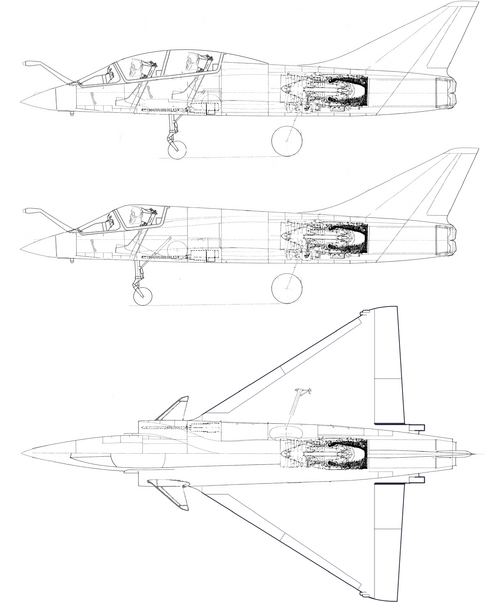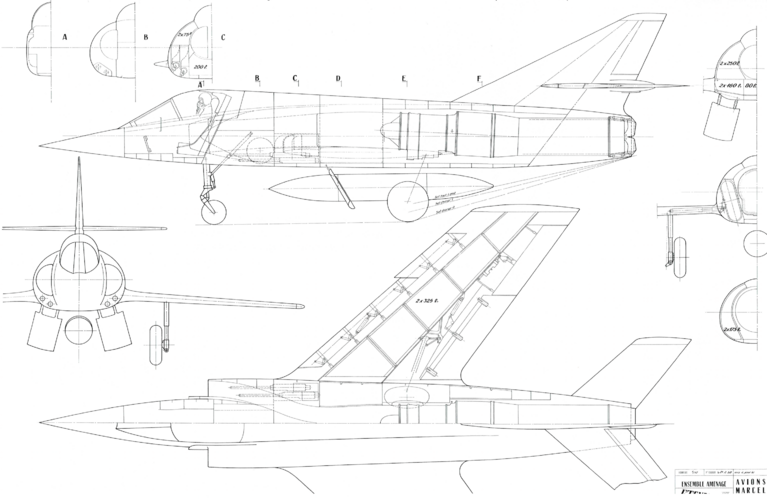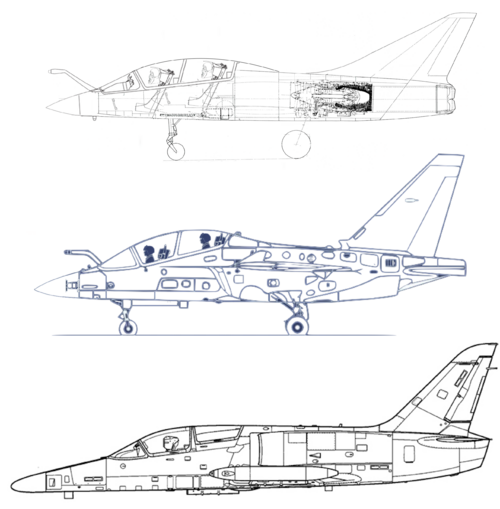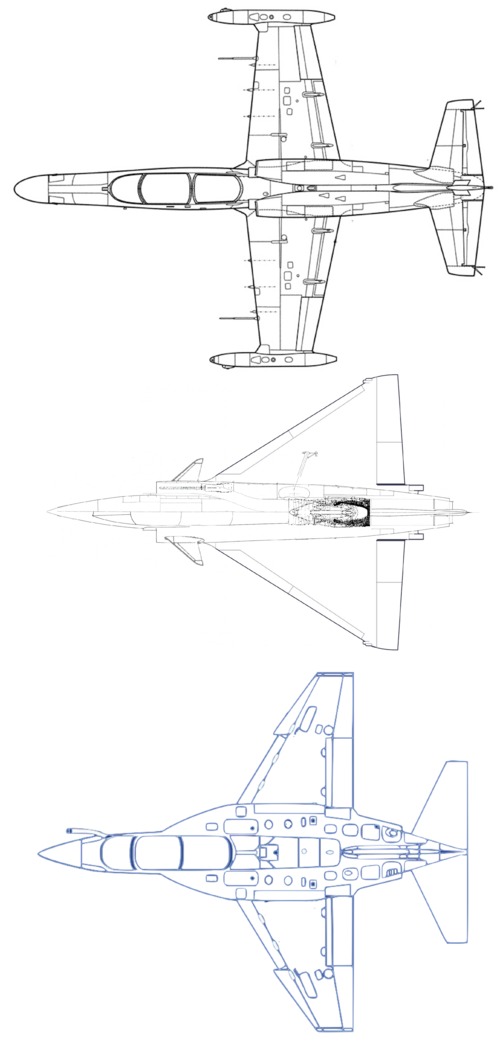Any thoughts on a next generation, rugged, simple, and cheap A-4 type aircraft built with the same things in mind that made the A-4 so great? For the modern day add some stealth features, light weight materials, an f404 type engine, flyby wire, advanced shaping, etc.
Taking a shot at this from a slightly roundabout angle.
1) What if I started with the tiny Etendard VI, Dassault's contender for NATO's 1950s lightweight tactical strike fighter competition?
2) Replaced the Orpheus turbojet with a modern F404/M88 engine (without afterburning)... almost identical size and weight
3) Added 30 years of Dassault aerodynamic experience (delta + fly-by-wire + canards)
4) And included an optional 2nd seat trainer (as originally planned by Dassault)?
This leads to a 3.9t empty trainer / light attack fighter, optimized for low transonic drag, with a high T/W ratio (5-5.5t of dry thrust), good internal fuel fraction (1.8t of fuel), 25% reduction in fuel consumption vs. the 1950s/60s, and high maneuverability. Oddly reminiscent of the diminutive Mirage I & II. It would likely be able to supercruise (Mach 1.2?) and serve as a back-up fighter, lead-in trainer, and carry 1-2 tons of air-to-ground weapons.
Drumrole... introducing the Dassault "Zephyr":

More pics below, including comparisons to the original Etendard VI, Hawk 100 and Mirage 2000.
Attachments
Last edited:






